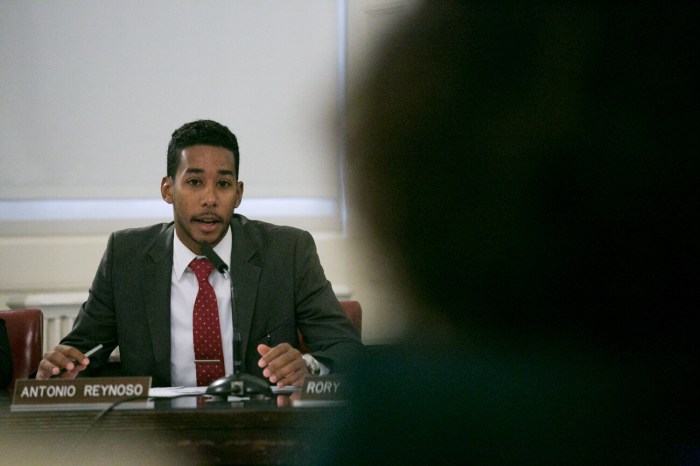Mayor Bill de Blasio revealed that city will resume planning for a long-term fix to the crumbling Brooklyn-Queens Expressway in the coming weeks, after a year of radio silence from officials regarding the beleaguered roadway.
“That’s going to really re-engage now as we start to move out of the pandemic, but we do need that long-term plan, and that’s what we’ll be saying more on this in the coming weeks,” de Blasio said at his daily press briefing on Jan. 26. “It’s important to start that work and prepare for the next administration to carry it through and really protect people for years to come.”
Hizzoner did not give any more specifics on the work to fix the highway’s decaying triple cantilever section around Brooklyn Heights, which could deteriorate to unsafe levels within five years, according to a year-old report released by a 17-member expert panel which the mayor convened to study the project.
De Blasio said he was hopeful for help from the feds under the new Democratic presidential administration of Joe Biden, who recently nominated the city’s former Transportation Commissioner Polly Trottenberg as Deputy Secretary for the U.S. Department of Transportation.
“Having Polly Trottenberg as the number two person at the US Department of Transportation is a great blessing for the city,” the mayor said.
De Blasio’s expert panel on the BQE released a 72-page report studying fixes for the Robert Moses-era roadway almost one year ago, which came after he’d convened the brain trust in April 2019 in response to widespread condemnation from locals and politicians over two proposals by Trottenberg’s DOT in 2018 — including and idea to run a six-lane highway on the beloved pedestrian promenade.
The 65-year-old road will become unsafe by 2026 without further restrictions on traffic, the authors of the panel warned at the time.
One of the panelists, former DOT commissioner Ross Sandler, penned an op-ed in the New York Daily News on Jan. 24 calling the situation “New York’s BQE emergency,” and urging officials to act on the rotting highway to avoid disaster — as happened on the 54-year-old Morandi Bridge in Genoa, Italy, which collapsed and killed 43 people.
Much of the damage to the BQE’s triple-cantilever comes from illegally overweight trucks barreling down the roadway, leading de Blasio to sign an executive order shortly after the report’s release intended to up police enforcement. The study also urged the reduction of lanes from three to two in each direction, but de Blasio was not convinced by that proposal.
Finally, the report advocated for the creation of another panel with government officials from the city, state, and federal level, since all three have a say in its future, but there has been no official moves to create that body during the past year.
In March, state legislators Jo Anne Simon and Brian Kavanagh introduced a bill in Albany to allow for automated truck enforcement sensors, but the law change never moved to the floor for a vote, just as the city and state started to shut down due to COVID-19.
In the meantime, the city’s DOT has started some repair work on the 1.5-mile section between Atlantic Avenue and Sands Street the agency has jurisdiction over (the remaining stretches of the highway are run by the state), such as a fix to the wall at Hicks Street near Poplar Street, which started in October.
A spokesman for DOT did not return a request for information whether the agency had done any other work on the BQE since January 2020, or to reveal the city’s future plans.























